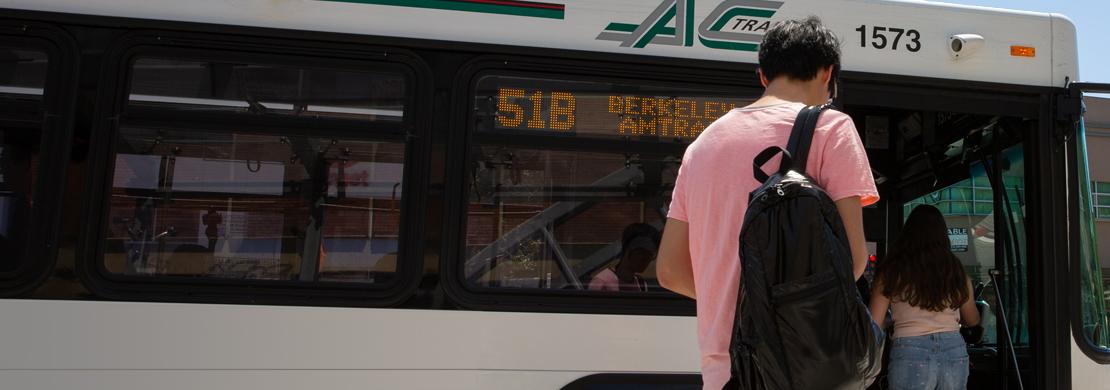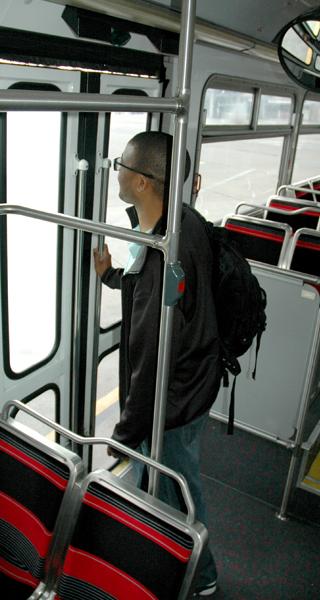Onboarding/ Offboarding

Catching and Boarding the Bus
Due to poor lighting or other environmental factors, visibility at some bus stops is limited. Be seen and avoid pass-ups. Make yourself more visible to AC Transit operators by wearing bright and reflective clothing and use safety lights (flashlights, bike lights, smart phone screens, etc.) if you have them.
All AC Transit buses can kneel to facilitate boarding. If you need assistance boarding, ask the operator to kneel the bus. If you have a stroller, cart, or are using a wheelchair/mobility aid, you can request the ramp or passenger lift to help you board.
Please have your payment ready to make boarding faster. If you’re paying with Clipper and are boarding a Transbay bus for local service, make sure you tell the driver before you tag your Clipper card.
Please be aware that all buses have priority seating areas for
seniors and persons with disabilities. Non-disabled riders must vacate
these seats when needed.
If there aren’t any seats available and you’re able to stand for the
ride, hold onto the stanchions and handrails as the bus may stop
abruptly.
Stopping and Exiting the Bus
Request your stop at least a block ahead by pulling the cord, pressing the button on the pole, or pressing the button above your head (on the green, commuter-style buses). The “Stop Requested” sign will light up. If you are not sure when your stop is coming up, ask the operator to let you know.
Leave the bus through the rear doors whenever possible. Wait for the green light before pushing the door open (on buses with manually operated doors) or pressing the door-open button found on the pole next to the door.
